Black Knot of Peach
Return to Diseases
Black knot (Apiosporina morbosa, formerly Dibotryon morbosum) results in knotty growths on branches of fruiting and ornamental cherry and plum; it rarely affects peach. Infected twigs and branches develop abnormal growths that enlarge each year to reach 12 inches or more in length. In late spring, knots expose olive-green colored fungal growth and sporulation. Later in the season, knots become hard, brittle, and black. Eventually, girdling occurs and branch death results. The pathogen overwinters in knots.
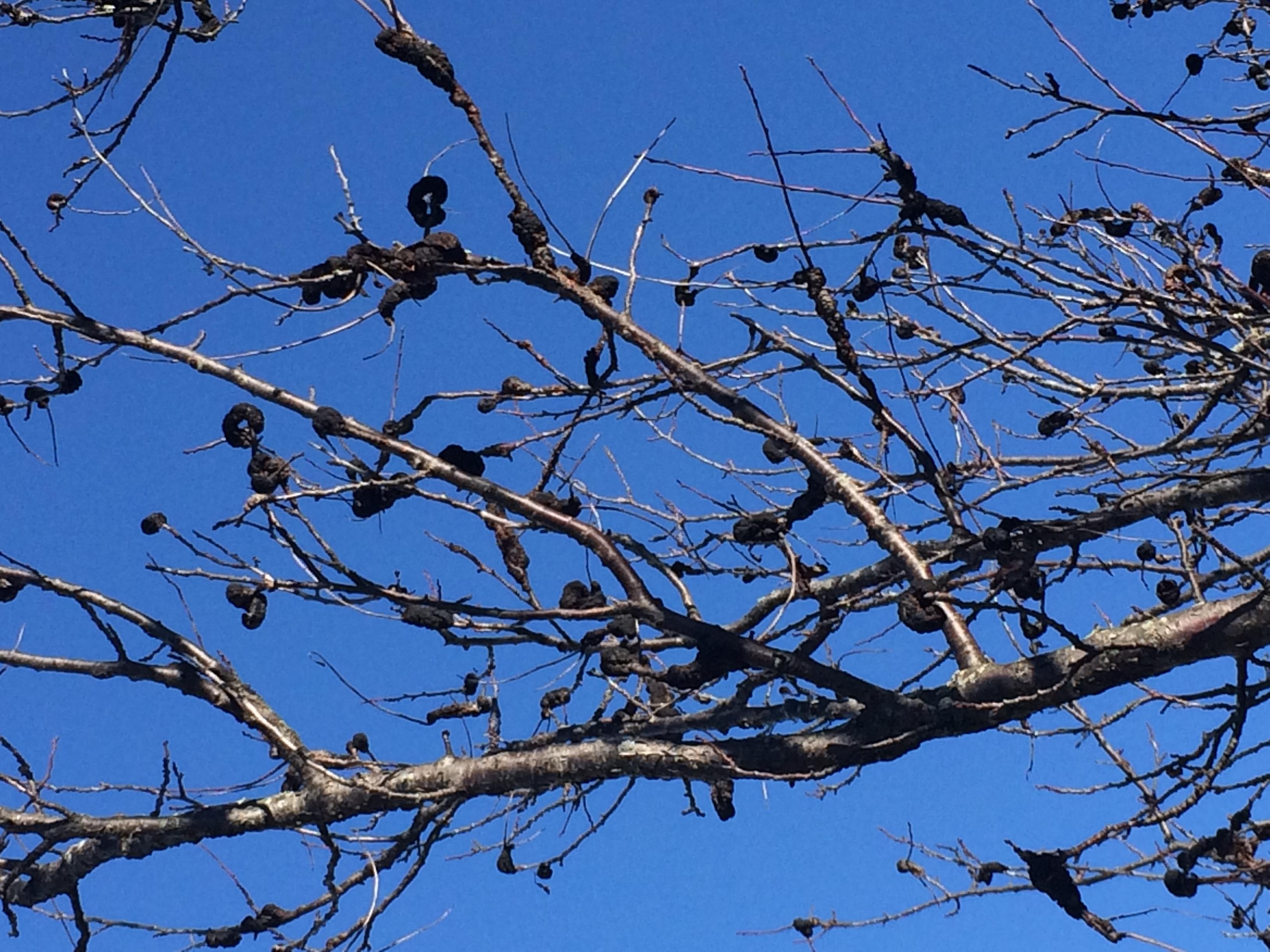
Tree heavily infected with black knot.
(Photo: Dennis Morgeson, University of Kentucky)
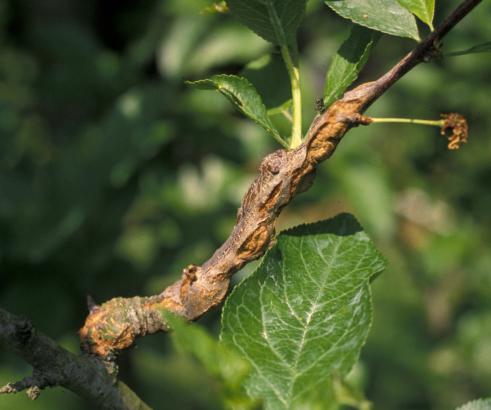
Early black knot symptoms.
(Photo: John Strang, University of Kentucky)
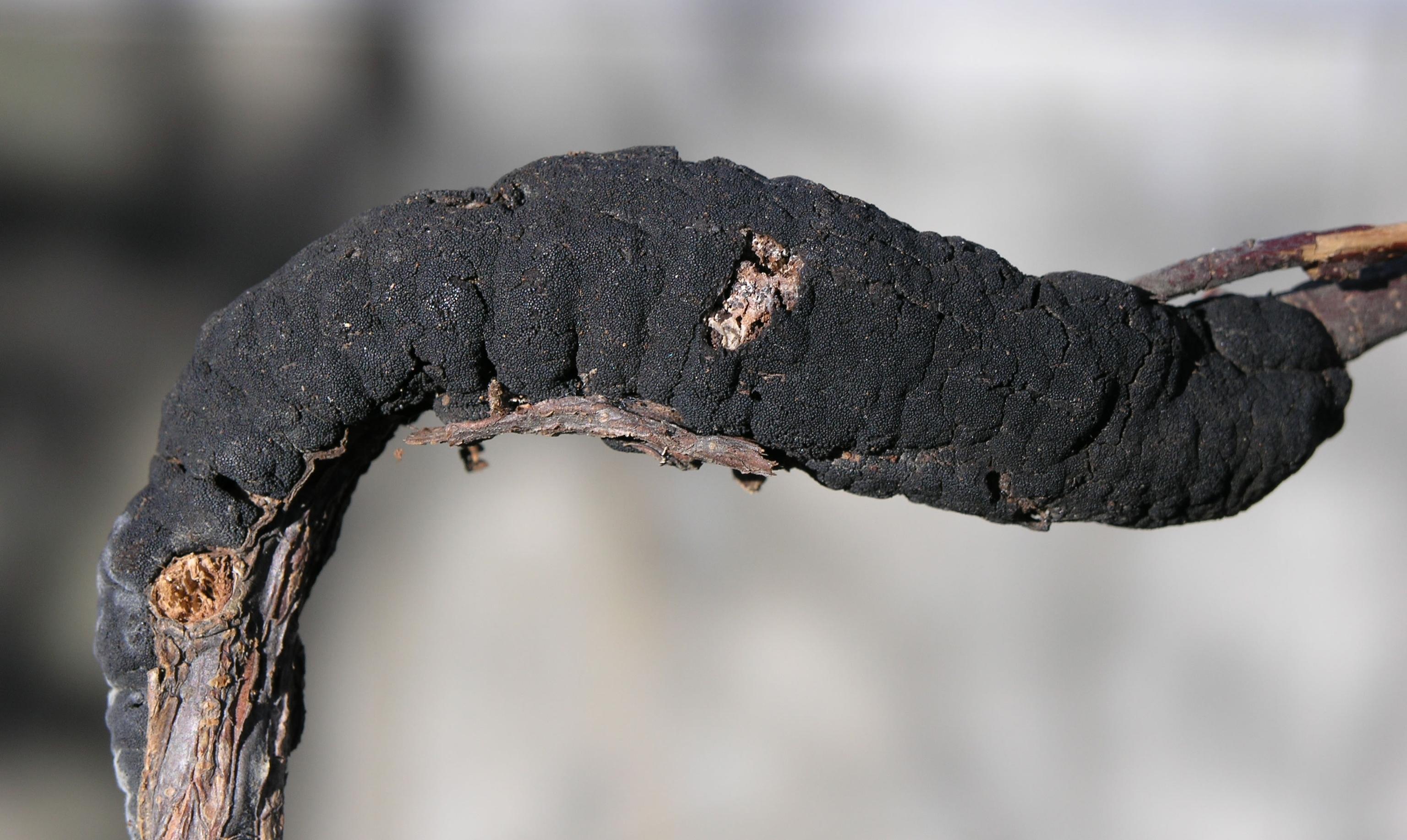
Advanced black knot symptoms later in the season.
(Photo: Bruce Watt, University of Maine, Bugwood.org)
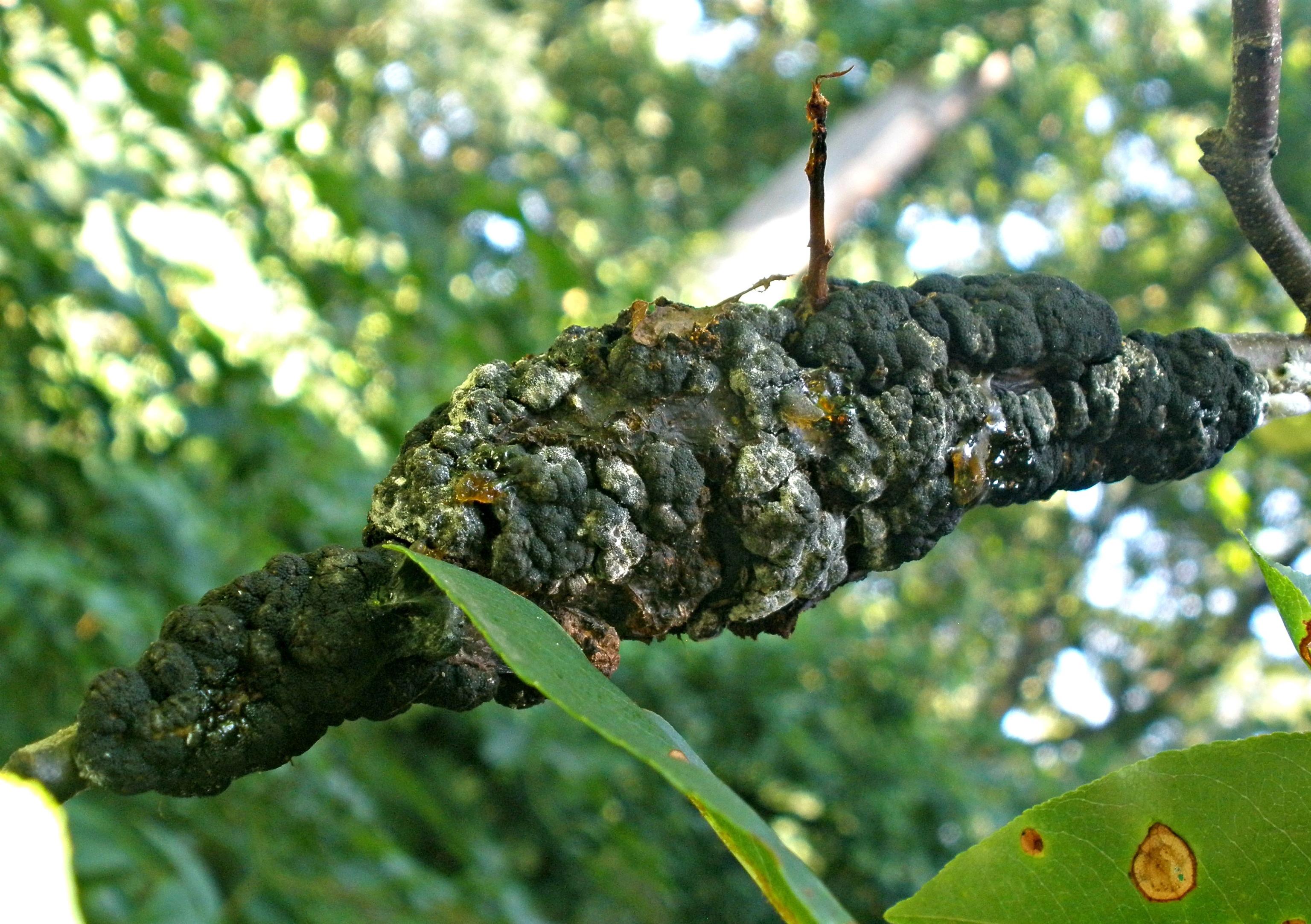
Advanced black knot symptoms later in the season.
(Photo: Ansel Oommen, Bugwood.org)
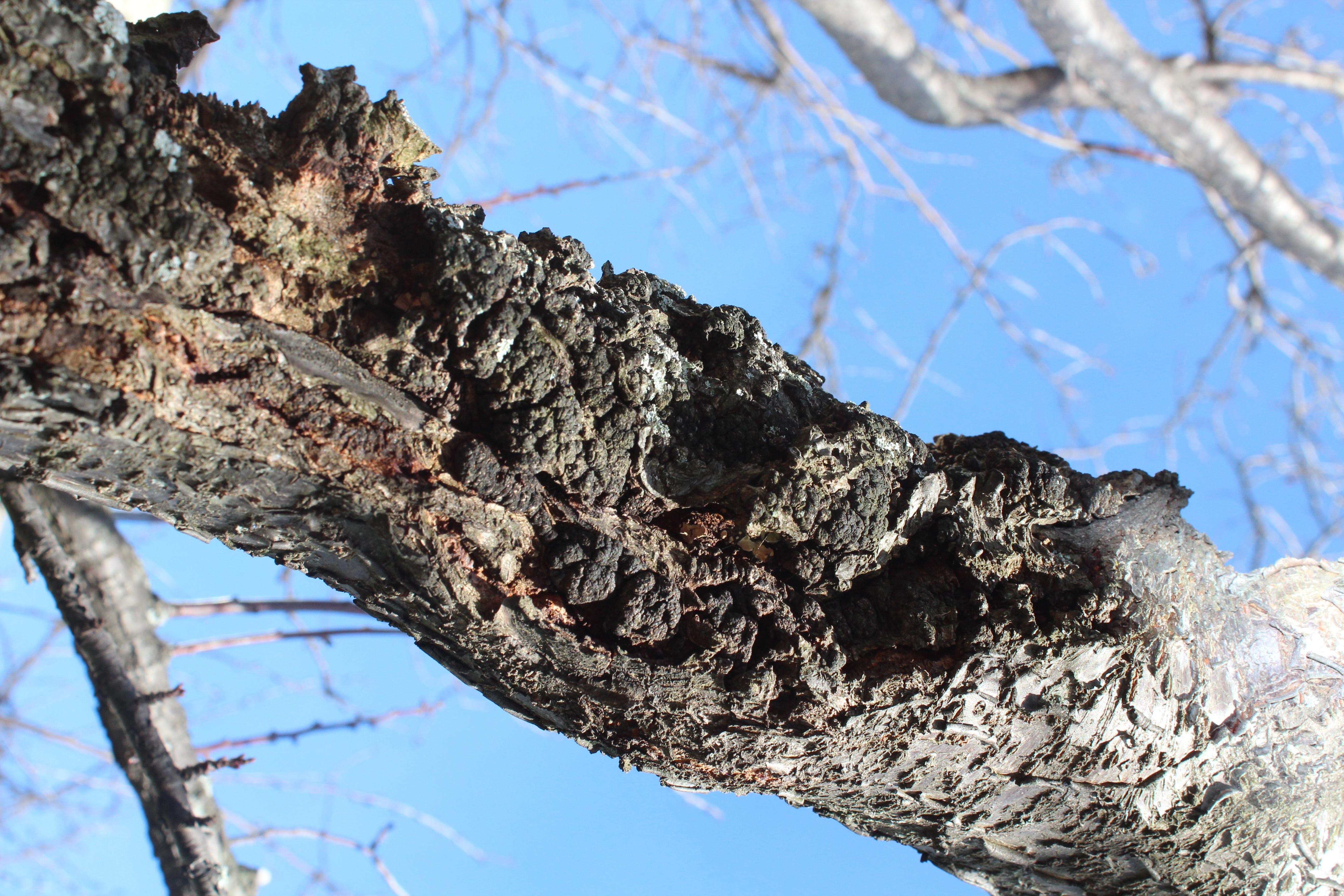
Black knot on a major limb.
(Photo: Nicole Gauthier, University of Kentucky)
Management:
- Practice proper sanitation (remove diseased wood 6 to 8 inches below knot before spring growth begins; discard debris away from orchard).
- Remove nearby wild Prunus species.
- Use fungicides to prevent new infections; fungicides are only effective if knots are removed.
